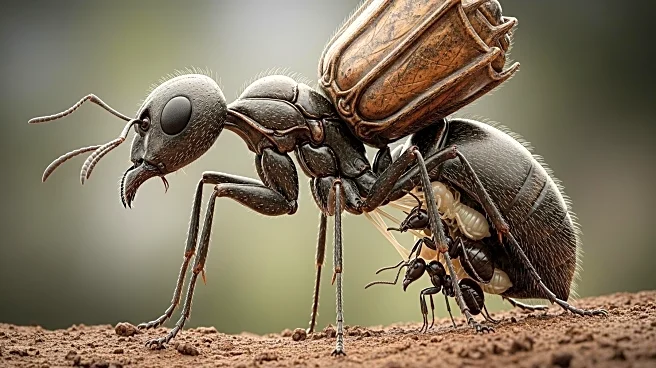What's Happening?
The rapid advancement and proliferation of surveillance technology have raised questions about the privacy of animals. As cameras and microphones become more ubiquitous, they are increasingly used to monitor wildlife and domestic animals alike. This development has sparked a debate among scientists and philosophers about whether animals have privacy interests and how these might be respected. The use of surveillance technology ranges from camera traps in the wilderness to microchips and drones tracking free-roaming herds. In urban areas, animals are often caught on CCTV and smartphone cameras, with images frequently shared on social media. While some animals appear indifferent to surveillance, others, like tigers and chimpanzees, actively avoid or react to it. The ethical implications of such monitoring are being explored, with some experts suggesting that animals may have a right to privacy that is currently being violated.
Why It's Important?
The implications of animal surveillance are significant for both ethical and practical reasons. On an ethical level, the intrusion of surveillance technology into the lives of animals raises questions about their rights and the moral obligations humans have towards them. The potential for harm is evident, as surveillance data can be misused, such as in the case of a GPS-tagged shark that was nearly killed due to its proximity to a beach. Practically, the constant monitoring of animals can lead to stress and behavioral changes, as seen in factory-farmed animals and those in zoos. This could have broader impacts on conservation efforts and animal welfare policies. The debate over animal privacy also reflects larger societal concerns about surveillance and privacy in the digital age, highlighting the need for a balance between technological advancement and ethical considerations.
What's Next?
As surveillance technology continues to evolve, discussions around animal privacy are likely to intensify. Researchers and policymakers may need to consider new guidelines or regulations to protect animal privacy, similar to those being debated for human privacy. The development of ethical frameworks for the use of surveillance technology in wildlife conservation and animal husbandry could become a priority. Additionally, public awareness and advocacy could play a role in shaping future policies, as more people become aware of the potential impacts of surveillance on animal welfare. The ongoing dialogue among scientists, philosophers, and the public will be crucial in determining how society addresses these complex issues.
Beyond the Headlines
The debate over animal privacy touches on deeper philosophical questions about the nature of privacy and the rights of non-human entities. It challenges traditional views of animals as mere resources or subjects of study, suggesting a need to reconsider their status in ethical and legal frameworks. The issue also highlights the interconnectedness of human and animal lives in an increasingly surveilled world, prompting a reevaluation of how technology is used in both conservation and everyday life. As society grapples with these questions, the conversation may lead to broader discussions about the role of technology in shaping human-animal relationships and the ethical responsibilities that come with it.











